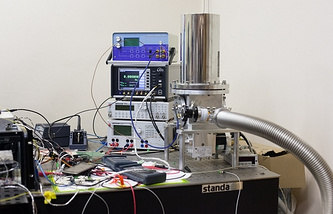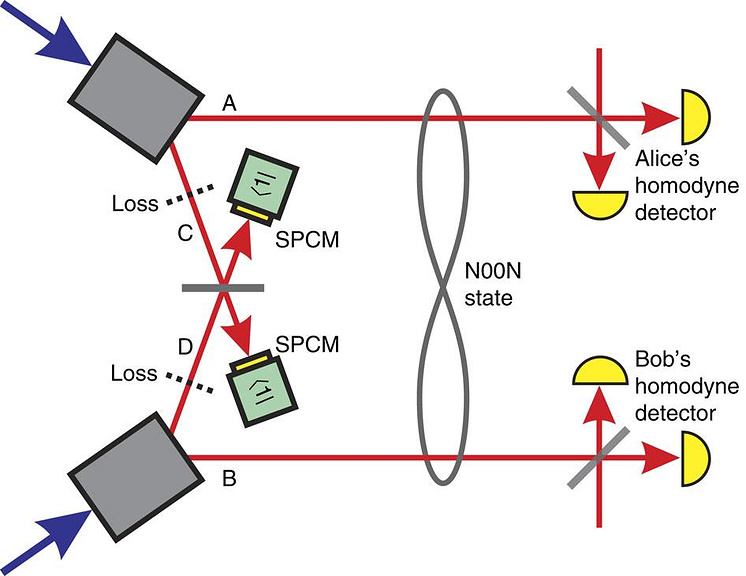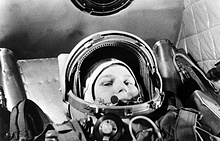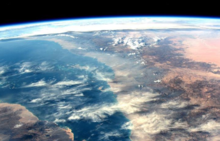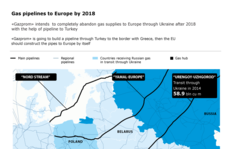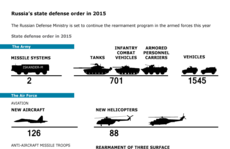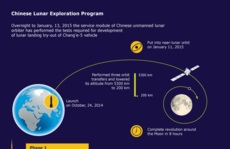
by choosing only interesting
sections.

Russian physicists create highly precise “quantum ruler”
The researchers have investigated entangled quantum N00N-states of photons, the particles of light in which a superposition of spacial positions not of the only one but of several photons appears

Alexander Lvovsky and Alexander Ulanov in the Laboratory of Quantum Optics in RQC
RQC press serviceMOSCOW, June 23. /TASS/ The physicists from the Russian Quantum Center (RQC), Moscow Institute of Physics and Technology (MIPT), the Lebedev Physical Institute, and L’Institut d’Optique (Palaiseau, France) have come up with a new technique for highly precise measurements of distances. They have utilized an effect of quantum entangled states, as reported by the popular-science web portal "Cherdak" at TASS, with the reference to the press service of Moscow Institute of Physics and Technology.
To measure the distances to an accuracy of billionths of a meter, scientists have applied the quantum effects. Such a precision is required to detect gravitation waves. The results of the study have been published in Nature Communications.
“This technique makes it possible to use quantum effects to increase the accuracy of measuring the distance between observers that are separated from one another by a medium with losses. In this type of medium, for example, in the atmosphere, quantum features of light are easily destroyed,” comments Alexander Lvovsky, a co-author of the paper, the head of the RQC scientific team that conducted the research, and a professor at the University of Calgary (Canada).
The researches have studied N00N states of photons in which there is a superposition of spatial positions not of the only one but several photons. The term "superposition" comes form quantum mechanics implying that a quantum particle can simultaneously rest in two distinct states, that is, a multiphoton laser pulse built up by a manufold of photons in N00N-state is at two spatial points at the same time.
Upon interference, the N00N-states create fringes, with the distance between them being smaller than the wavelength. In optical interferometers, the devices used for discovery of gravitation waves within the LIGO project, the distance between fringes is approximately the same as a wavelength, i.e. 0.5-1 microns. Thus, the usage of entangled states will increase the precision of measurements of optical interferometers.
Entanglement swapping
The entangled quantum states “disentangle” when passing a medium even with small losses. The scientists have solved this problem with the use of the so-called "entanglement swapping."
“Suppose that both Alice and Bob, which in physics are usual nicknames for participants of quantum objects swapping, have an entangled state. If I take then one part of Alice’s entangled state, and an another part from Bob, and I do a joint measurement on them, the remaining parts of Alice’s and Bob’s states will also become entangled even though they have never interacted” says Lvovsky.
“In our experiment, Alice and Bob create two entangled states and send one of the parts to a medium with losses, which is simulated by darkened glass. A third observer, midway between Alice and Bob, conducts joint measurements on these parts. This results in entanglement swapping: the remaining parts of Alice and Bob’s states are in the N00N state. And as these parts have not experienced losses, they exhibit their quantum properties in full,” explains the lead author of the paper, Alexander Ulanov.
According to his opinion, the level of losses in the glass corresponds to an atmospheric thickness of approximately 50 kilometers between receiver and transmitter. In general, this method enables to accurately measure the distances in hundreds of kilometers. For comparison, the LIGO interferometer measures about 4 km. The present work will enable using the entangled quantum states effects in the highly precise measurement and, additionally, will increase notably the accuracy of measurements.
